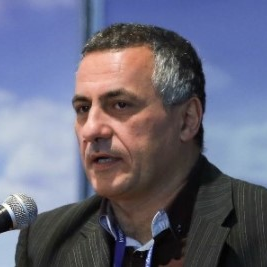Active Noise and Vibration Control Applications: Latest Achievements, Challenges and Prospects
A special issue of Applied Sciences (ISSN 2076-3417). This special issue belongs to the section "Aerospace Science and Engineering".
Deadline for manuscript submissions: closed (30 April 2023) | Viewed by 10336
Special Issue Editors
Interests: morphing technology; smart structures; active control; topology optimization
Special Issues, Collections and Topics in MDPI journals
Interests: adaptive structures; smart structures; morphing; structural health monitoring; integrated vehicle health monitoring; vibroacoustic control
Special Issues, Collections and Topics in MDPI journals
Special Issue Information
Dear Colleagues,
Active technologies have reached maturity and large-scale application in automotive and industrial machinery. Active noise control systems are offered on demand for luxury cars and use anti-noise sound fields generated by loudspeakers. Additionally, active devices can be optionally integrated to adapt the mechanical impedance of suspensions (motor, chassis, wheels, etc.), thereby reducing vibration propagation toward passengers. Such noise reduction concepts often rely on feedforward control strategies (either pure feedforward or combined with feedback). The error signal is either taken from an additional sensor (usually an accelerometer in active vibration control or a microphone in active noise control) or directly from the disturbance.
Contrary to these mature fields of application, the first experiences in aeronautics show these technologies cannot be directly transferred to aircraft. Despite the large number of publications, active noise control (ANC) and active vibration control (AVC) systems are still used sporadically in modern aircraft. The huge expectations regarding these technologies have led to a large number of patents which, however, are often not reliable or cost effective enough to be widely accepted by the aviation industry. Further research on reliable noise predictions and adaptive control strategies is still required to design efficient passive and active noise suppression devices. Advances in experimental techniques are the first steps toward this direction. Control electronics and miniature vibration actuators and sensors would also be of considerable interest.
This Special Issue welcomes the latest achievements, and prospects for novel actuators, sensors, control strategies, and applications of active noise and vibration control in the field of aeronautics , as well as novel challenges faced in the automotive and machinery systems. Its aim is to collect contributions to progress simulation and integration processes of applied research products with improved modeling and simulations tools, advanced virtual and physical prototyping, and test metrics, while achieving reduced complexity and power consumption.
Dr. Ignazio Dimino
Dr. Antonio Concilio
Guest Editors
Manuscript Submission Information
Manuscripts should be submitted online at www.mdpi.com by registering and logging in to this website. Once you are registered, click here to go to the submission form. Manuscripts can be submitted until the deadline. All submissions that pass pre-check are peer-reviewed. Accepted papers will be published continuously in the journal (as soon as accepted) and will be listed together on the special issue website. Research articles, review articles as well as short communications are invited. For planned papers, a title and short abstract (about 100 words) can be sent to the Editorial Office for announcement on this website.
Submitted manuscripts should not have been published previously, nor be under consideration for publication elsewhere (except conference proceedings papers). All manuscripts are thoroughly refereed through a single-blind peer-review process. A guide for authors and other relevant information for submission of manuscripts is available on the Instructions for Authors page. Applied Sciences is an international peer-reviewed open access semimonthly journal published by MDPI.
Please visit the Instructions for Authors page before submitting a manuscript. The Article Processing Charge (APC) for publication in this open access journal is 2400 CHF (Swiss Francs). Submitted papers should be well formatted and use good English. Authors may use MDPI's English editing service prior to publication or during author revisions.
Keywords
- ANC, AVC, and ASAC applications
- Modeling and simulation of active noise and vibration control systems
- actuators and sensors for active control systems
- feedforward and feedback control strategies for active systems
- noise and vibration prediction tools integrating passengers’ comfort perception prior or together with physical testing
- experimental techniques for in situ determination of passengers’ comfort associated with active noise and vibration technologies
- technological prerequisites and guidelines for first market prototyping of active systems






